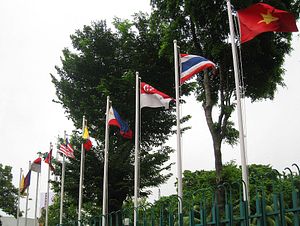After nearly two decades of progress, democracy is now in retreat in Southeast Asia according to a new report by the Council on Foreign Relations.
The working paper, written by CFR Senior Fellow for Southeast Asia, Joshua Kurlantzick, argues that the significant democratic gains Southeast Asia made in the 1990s and 2000s have begun being rolled back over the last four years.
Kurlantzick begins by noting that not too long ago Southeast Asia was championed by democracy advocates as a leading example for other regions to follow. While the region was largely autocratic throughout the Cold War, the first two decades of the post-Cold War era saw most countries in the region at least make greater progress towards democracy. Kurlantzick argues that this was the result of multiple factors, including the end of the superpower rivalry, emerging middle classes after decades of rapid economic growth and new communication technologies that empowered these new urban middle class populations to challenge authoritarian governments.
Kurlantzick also points out that during this period there was a regional push toward democracy. During the 1980s, Northeast Asian states like Taiwan and South Korea had become democratic. Moreover, after the Cold War the Association of Southeast Asian Nations (ASEAN) began to take a greater role in promoting human rights and political reform.
In the early 1990s, this led to the emergence of new democracies in places like the Philippines and Thailand, as well as failed attempts to orchestrate democracy in countries like Myanmar. The devastating impact of the Asian Financial Crisis in the late 1990s only served to further discredit authoritarian governments. In countries like Indonesia, this paved the way for democratic movements to overthrow existing regimes. In Indonesia’s case, this resulted in two new democracies as a result of East Timor becoming the independent and democratic state of Timor-Leste.
Even non-democratic countries witnessed significant political reforms, Kurlantzick points out. For example, the opposition movement led by Anwar Ibrahim in Malaysia continued to gather greater support, forcing the ruling coalition to allow them some degree of power. Singapore’s opposition also began gaining power while criticizing the People’s Action Party became more acceptable. Later, in 2010, Myanmar began implementing political reforms under Thein Sein that reduced the role of the military and allowed the main opposition party to run in elections.
Altogether then, the 1990s and 2000s brought remarkable progress towards democratization to Southeast Asia. As Kurlantzick points out, whereas in 1989 only the Philippines was ranked as “partly free” by Freedom House, by 2009 the Philippines, Thailand, Singapore, Malaysia, and Timor-Leste were ranked as “partly free” nations, while Indonesia was ranked as “free.”
The first four years of this decade has seen this trend reverse itself. “Today,” Kurlantzick observes, “few people are touting… Southeast Asia as a democratic success story.” He notes that since 2006 Thailand has been mired in a political crisis that has seen the military reemerge as a powerful political force at the expense of civilian governance. Even civilian leaders like Thaksin Shinawatra, Kurlantzick contends, used the popular vote to govern as more of an authoritarian leader.
Similarly, the high point of Malaysia’s democratic progression was between late 2008 and early 2013, according to Kurlantzick. Over the last year, the BN-led government has taken steps to stymie the opposition’s growing electoral success, including resorting to various kinds of election fraud. It has also passed legislation reinstating authoritarian powers.
While Thailand and Malaysia are the most notable instances of democracy in retreat, Kurlantzick also notes that Cambodia and Myanmar have successfully rolled back some of their already limited political reforms. Meanwhile, the authoritarian states in the region like Vietnam, Brunei, and Laos have halted all reforms and have in some instances also begun rolling back previous reforms.
Kurlantzick contends that a number of factors have caused this democratic retraction in Southeast Asian. For instance, visionary first-generation democracy leaders were scarce in the region. Instead, most of the first-generation democracy leaders sought to use their electoral victories to consolidate their power and rule more like authoritarian leaders. Communication technologies also did not prove to be the magic bullet that many democracy advocates in Southeast Asia and elsewhere once hoped. The new democracies in the region also were ineffective at governing, and problems like corruption grew worse under the elected regimes. Regional factors were also important. Notably, ASEAN’s commitment to human rights has lacked substance, and China’s growing political, economic and social ties in the region have worked against democratization.
Kurlantzick also points out that democracy’s retreat in Southeast Asia mirrors the larger global trend of democratic reversals, which is consistent with the political scientist Samuel Huntington’s contention that democracies come and go in waves. One could also note that ASEAN’s retreat from democracy coincides with the generally hard times the region has fallen upon.
Kurlantzick contends that democracy’s retreat in Southeast Asia will have wide-ranging and largely negative consequences for the region itself as well as the United States. With regards to the latter, Kurlantzick writes, “If this democratic rollback continues, it is likely to seriously endanger American security cooperation in East Asia, undermine the region’s growth and economic interdependence, and cause serious political unrest, even insurgencies, in many Southeast Asian nations.”
































